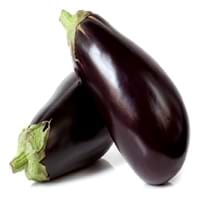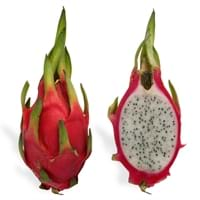Health Benefits
Cancer prevention, Heart care, Reduces blood circulation problems
Anti-oxidant properties, Anti-aging benefits, Maintains healthy cholesterol level, Weight loss properties
General Benefits
Digestive aid, Fights against infections, Flu treatment, Healing of wounds, Helps in weight loss, Treatment of common cold
Helps in weight loss, Suppresses Arthritis
Skin Benefits
Anti-aging benefits, Brightens and lightens complexion, Skin cleansing, Skin rejuvenation
Anti-aging benefits, Heals sunburn, Treatment of acne
Hair Benefits
Prevents hair loss, Promotes longer and healthier hair, Protects hair, Rejuvenates scalp
Treatment of colored hair
Allergy Symptoms
Abdominal pains, Anaphylaxis, Diarrhea, Dizziness, Hives, Itching in tongue and other parts of mouth, Tingling sensation in mouth, Vomiting
NA
Side Effects
Allergic reaction, Irritation, Nausea, Skin rash, Swelling
NA
Lactating Women
No
Not Available
Best Time to Eat
Along with meal, Don't consume at night and before bed
Any time except an hour after meal, Don't consume at night and before bed
Vitamin B5 (Pantothenic Acid)
Not Available
Vitamin B6 (Pyridoxin)
Not Available
Vitamin B9 (Folic acid)
Not Available
Vitamin C (Ascorbic Acid)
Vitamin E (Tocopherole)
Not Available
Vitamin K (Phyllochinone)
Not Available
Lutein+Zeaxanthin
Not Available
Phytosterol
Not Available
Calories in Fresh Fruit with Peel
Calories in Fresh Fruit without Peel
Not Available
Not Available
Calories in Frozen Form
Not Available
Not Available
Calories in Dried Form
Not Available
Not Available
Calories in Canned Form
Not Available
Not Available
Calories in Jam
Not Available
Type
Fruit vegetable, Tropical
Berry, Citrus, Fruit vegetable, Melon, Tree fruit, Tropical
Season
Spring, Summer
Early fall, Summer
Varieties
Black Magic, Black Beauty, Black Bell, Sicilian, Italian, Indian (Baby), Japanese, Chinese and White
Selenicereus megalanthus and Hylocereus polyrhizus
Color
Black, Green, Pink, Purple, Purplish black
Magenta, Pink
Taste
Bitter, Slightly sweet, Spongy
Bland
Origin
India
Central America, Mexico
Climatic Conditions
Warm to hot climate
NA
Facts about
- In Italy, it's a belief that diet rich in eggplant leads to madness. Hence, they call it a 'crazy apple'.
- Eggplant contains nicotine & can help quit smoking.
- Juice made from its leaves and roots is medicinal.
NA
Other Countries
Egypt, India, Indonesia, Iran, Iraq, Italy, Japan, Spain, Turkey
NA
Top Importer
United States of America
China
Top Exporter
China
Vietnam
Botanical Name
Solanum melongena
Hylocereus undatus
Synonym
Solanum ovigerum or Solanum trongum
Pitaya, Red Pitahaya, Night blooming Cereus, Strawberry Pear, Belle of the Night, Conderella plant
Subkingdom
Tracheobionta
Tracheobionta
Division
Magnoliophyta
NA
Class
Magnoliopsida
Not Available
Subclass
Asteridae
Liliidae
Order
Solanales
Caryophyllales
Family
Solanaceae
Cactaceae
Species
S. melongena
H. undatus
Generic Group
Not Available
Cactus
Difference Between Eggplant and Dragonfruit
We might think that Eggplant and Dragonfruit are similar with respect to nutritional value and health benefits. But the nutrient content of both fruits is different. Eggplant and Dragonfruit Facts such as their taste, shape, color, and size are also distinct. The difference between Eggplant and Dragonfruit is explained here.
The amount of calories in 100 gm of fresh Eggplant and Dragonfruit with peel is 25.00 kcal and 60.00 kcal and the amount of calories without peel is Not Available and Not Available respectively. Thus, Eggplant and Dragonfruit belong to and category.These fruits might or might not differ with respect to their scientific classification. The order of Eggplant and Dragonfruit is Solanales and Caryophyllales respectively. Eggplant belongs to Solanaceae family and Dragonfruit belongs to Cactaceae family. Eggplant belongs to Solanum genus of S. melongena species and Dragonfruit belongs to Hylocereus genus of H. undatus species. Beings plants, both fruits belong to Plantae Kingdom.









